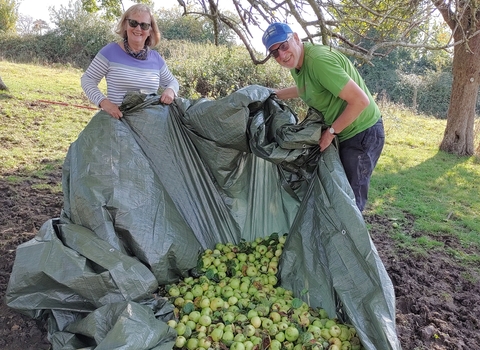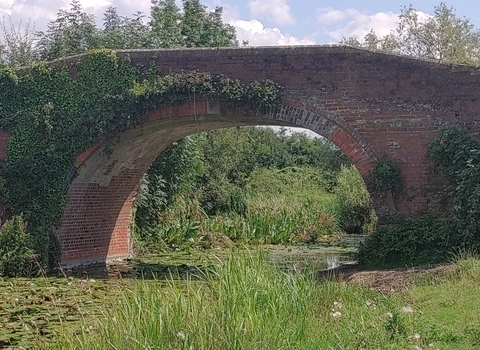About Cotswold Canals Connected
The Cotswold Canals Connected Project will link the Stroudwater Navigation from The Ocean Railway Bridge at Stonehouse to the Gloucester and Sharpness Canal at Walk Bridge near Saul Junction. The Project is approximately 4 miles long consisting of 3 miles of defunct navigation and 1 mile of navigation (the “missing mile”) that will be created from arable and pasture land between Eastington and the A38.
Gloucestershire Wildlife Trust are a lead delivery partner along with Stroud District Council and Cotswold Canals Trust. Other delivery partners include Stroud Valleys Project and the Canal & River Trust.
Improved wildlife enhancement and conservation
Restoration of the Stroudwater canal has the potential to make a significant contribution to biodiversity by providing new waterway and adjacent habitats, and by re-forming an important link between habitats along the River Severn in the west and those in the valleys of the Cotswold escarpment to the east. The restored canal will form a linear mosaic of habitats including woodland and scrub-edges, hedgerows, traditional orchards, flower-rich towpath verges and diverse emergent “reedy” fringes. The River Frome already provides this west-east link. Running approximately parallel to it, the canal will complement this and will effectively widen the river valley for wetland and riparian species, providing greater diversity and resilience to future change.
Cotswold Canals Connected is focused on restoring the local environment and creating an array of habitats that achieve a net positive gain for biodiversity. Cotswold Canals Connected is using the canal restoration to link and enhance the natural features and wildlife habitats of the fragmented landscape from Saul Junction to The Ocean, Stonehouse. This commitment has led to the development of a ‘Working with Nature’ strategy.
Cotswold Canals Connected wants to work with nature by:
- Making the most of the project’s location in a wildlife corridor
- Keeping knowledge of the state of local wildlife up-to-date
- Minimising disturbance to wildlife areas
- Creating new habitats
- Building best practice in wildlife protection into canal restoration
- Ensuring wildlife and biodiversity are woven into all project themes
- Embedding wildlife features in canal design
- Joining adjacent land to the canal wildlife corridor
- Partnership working with landowners
Engaging people and communities
A key element of the success of the Working with Nature strategy will be engaging people and communities in the natural environment and wildlife conservation opportunities created along the canal-river corridor.
The Cotswold Canal Connected Project will coordinate a broad range of activities for a variety of interests ranging from spending time in nature for health and well-being to building wildlife habitats and/or being involved in species or other environmental monitoring.

Could you help with our canal wildlife monitoring?
Are you interested in seeing and identifying the different wildlife along the canal? Would you like to be involved in helping us get a better understanding of the distribution and behaviour of wild mammals and the factors that affect them?
The Cotswolds Canals Connected project have a number of motion-activated camera traps which have been placed in different habitats along the canal length to capture the wide range of species already living in and adjacent to the canal.
Species spotted to date include otters, water voles, badgers, water rail, herons and foxes to name but a few!
The images from these cameras will be used to help us establish a baseline and monitor any changes in the number, range and abundance of wildlife on both the canal and River Frome as the canal project is delivered.
All the photos collected are being uploaded to MammalWeb, which is a "citizen science" platform intended to collate, validate and curate camera trap data to help inform us about the distribution and ecology of mammals. Linking to MammalWeb will also mean this project will support, and be part of, wider research on the current state of UK wildlife.
You can sign up with ease to be a ‘spotter’ on the CCC Project here. Once you’re signed up you will become a citizen scientist and will be assisting us in identifying animals captured on our trail cameras.
We would also like to welcome volunteers who wish to participate in practical conservation tasks along the canal corridor. Over the coming weeks and months we will be carrying out environmental surveys, invasive species removal and a number of practical habitat management tasks.
If you’re interested in becoming a volunteer please contact volunteering@gloucestershirewildlifetrust.co.uk.

